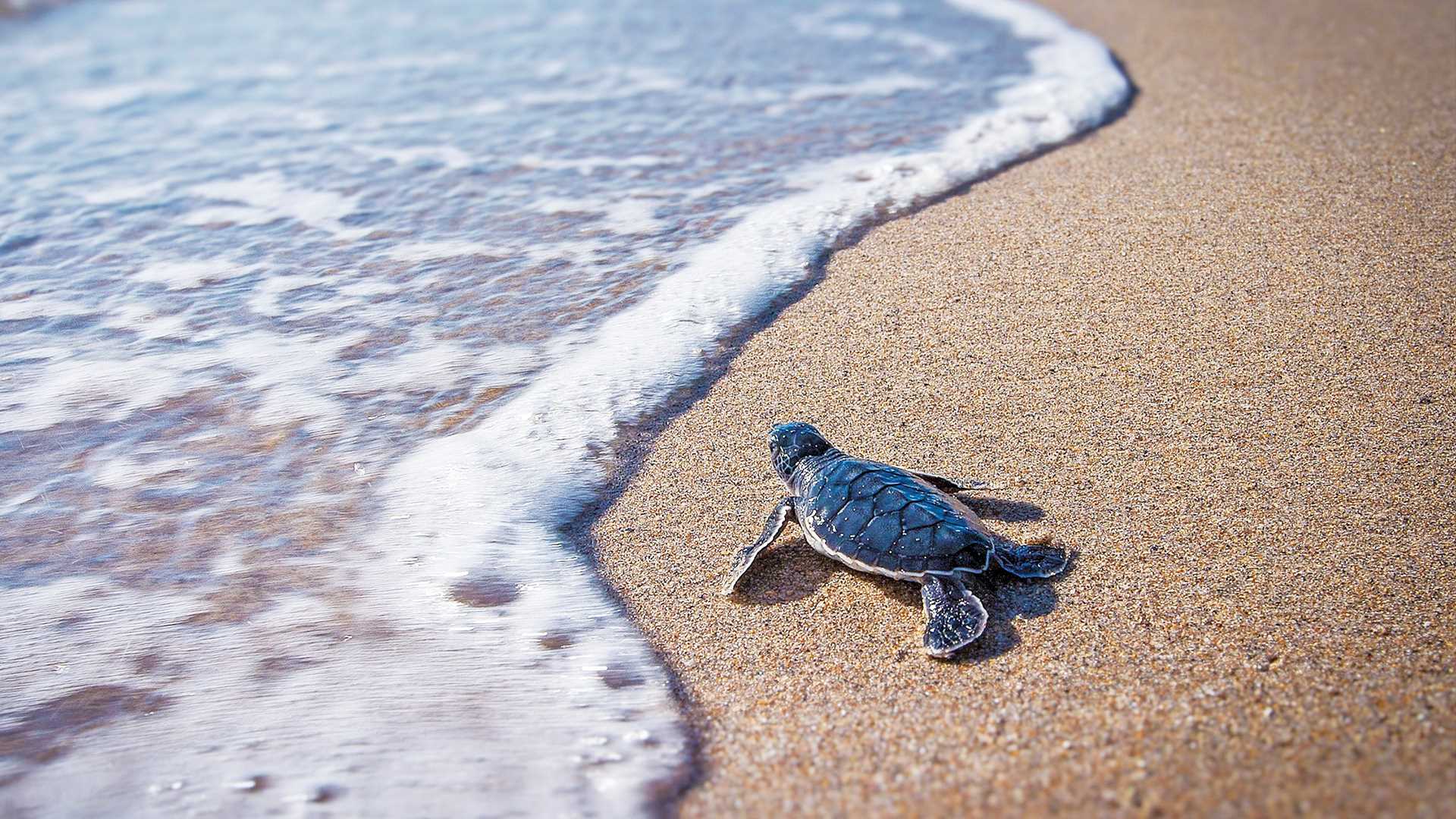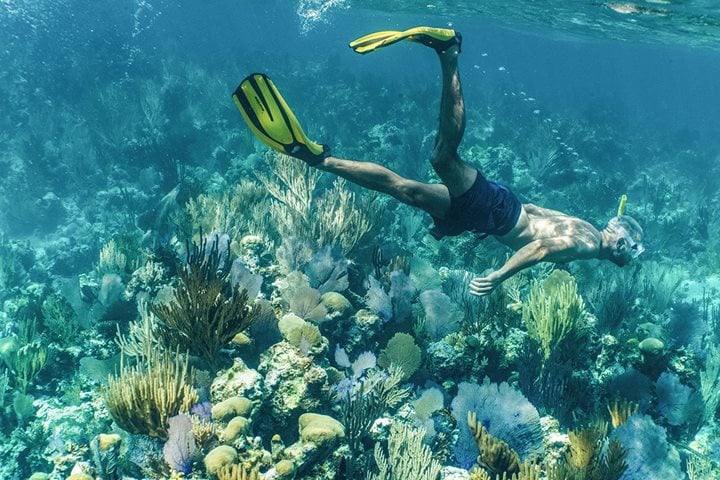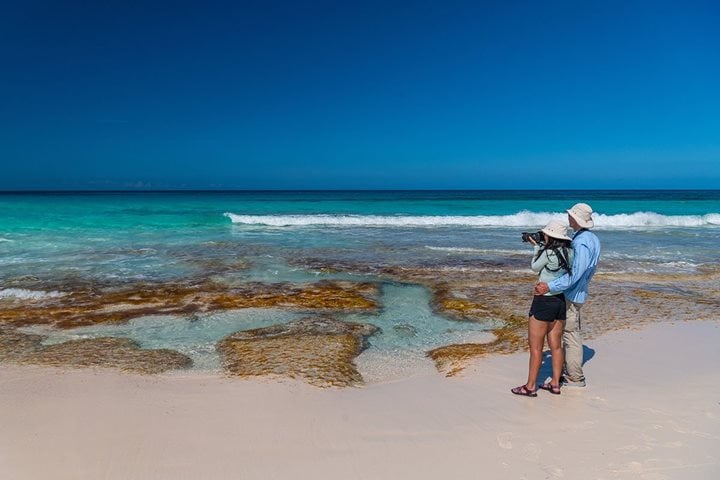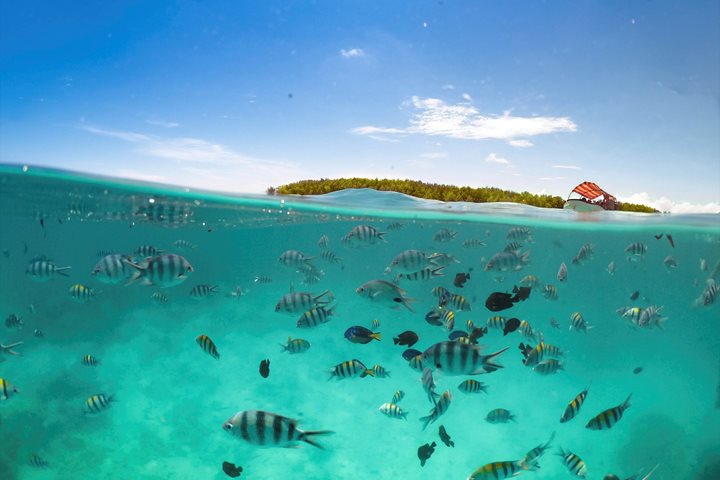Halfway down the Bahamian archipelago lies Eleuthera, a curling, hooked sliver of an island, some 110 miles long and narrow, and at its widest point, only a mile-and-a-half. Halfway up that sliver lies a lake, a so-called blue hole, just a mile from the Atlantic and less than half-a-mile from the Caribbean side. One might glance back as they pass by and not think much of it; these landscapes are common in The Bahamas.
Get Inspired By Photos, Videos, Webinars, Stories, And Exclusive Offers.
Sign Up
But this lake has stories to tell—stories of wildlife, of conservation, and of a dedicated family who understood the significance and value of this fascinating natural spot.
Known by a few names—Turtle Lake, Burrows Pond, Edwin’s Fishing Hole—it is one of the largest inland blue holes in The Bahamas at approximately 68 acres. Saltwater, it is fed by the movement of the ocean and the rising and falling tides; underground caves connect both bodies of water to the lake.
That unique configuration created an unprecedented phenomenon found nowhere else in Bahamian blue holes: Green sea turtles have nested and flourished here for generations, making their way to and from the sea. These ocean-going nomads appear almost out of place within the contained shores of the lake. And they’re big. Thanks to the productive waters of the mangroves that ring the lake, denizens of the open ocean all inevitably grow larger here than they would in their more usual haunts. In the vast sea, those nutrients are more easily dispersed, but they’re more contained in the mangroves and the marine life happily benefits. Grunts, groupers, and spiny lobsters can also be found flourishing here as well.
A legacy of conservation
This thriving ecosystem didn’t just happen by itself, though. In the 1940s, the Burrows family of Eleuthera settled the area and it was the family patriarch and matriarch, Edwin and Gertrude Burrows who recognized the economic value of the lake. Edwin was both an entrepreneur and a visionary. He pictured his beloved lake, full of life, to be a place of nature, and believed it would make a wonderful ecotourism destination on Eleuthera.
So he decided to stock the lake with sea turtles, lobsters, and wild fish. A section of mangrove was cleared, sand was brought in, and a beach was created where sea turtles could come to nest. When baby turtles emerged from the sand, Edwin collected and reared them in a small rock-lined alcove to protect them from becoming a quick meal for the giant groupers in the lake. When the turtles were ready, he would release some into the ocean and some back into the lake.
Edwin, Gertrude, their 12 children and many grandchildren stewarded this unique habitat, working tirelessly to preserve it and foster awareness among ecologically minded travelers who, as we will, get to experience the lake by kayak, standup paddleboard, or canoe. With local guides, we will search for the turtles resting on the sandy substrate.
Today, the Burrow family’s work continues with renewed energy to protect Turtle Lake, to nurture it as an ecotourism destination, and to connect it to other important natural areas on Eleuthera. Nearby is the botanically rich Leon Levy Native Plant Preserve, and when we walk the quiet trails, we can spot endemic birds like great lizard-cuckoos and Bahama woodstar hummingbirds as they forage in the uniquely Bahamian Blackland Coppice forest. Plans are in the works to establish the Edwin Burrows Conservation Trail, linking this preserve with Turtle Lake.
When one thinks of The Bahamas, the immediate visions that come to mind are of low-lying white sand islands surrounded by turquoise blue waters teeming with reef-loving fish—a tropical paradise. But there is more, so much more if one goes deeper. The Bahamas are full of stories like this, of the islands’ special places and of the Bahamian people who love and protect them. This is where the real Bahamas are revealed on Lindblad Expeditions’ Exploring The Bahamas' Out Islands: Natural Wonders & Hidden History.




